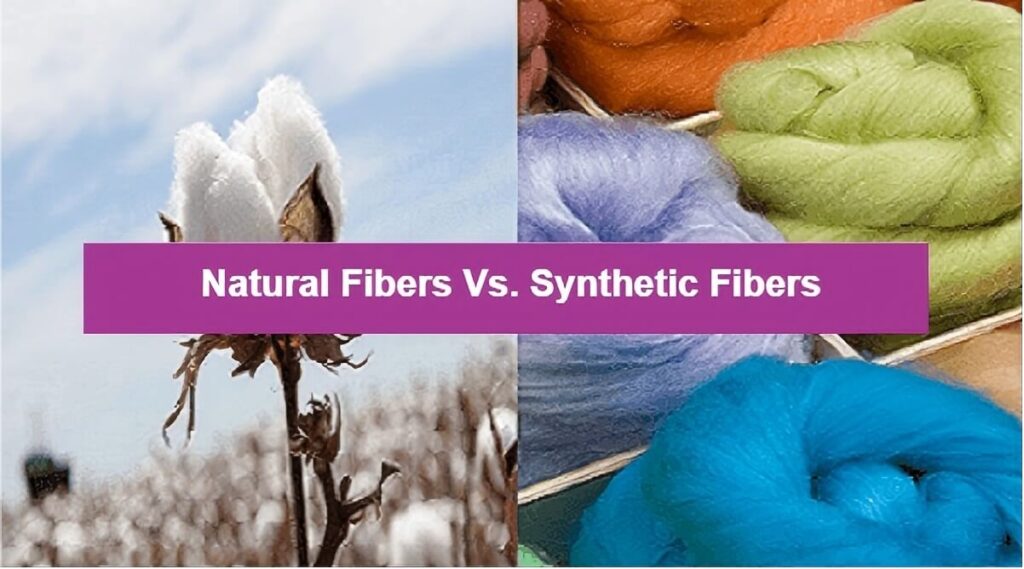Einführung
Nylon ist ein Name, der überall in unserem täglichen Leben auftaucht, von der Kleidung, die wir tragen, bis hin zu den Geräten, die in der Luft- und Raumfahrttechnik verwendet werden. Aber haben Sie sich jemals gefragt, ob Nylon eine Naturfaser oder eine synthetische Faser ist? Angesichts der wachsenden Besorgnis über die Nachhaltigkeit und die Auswirkungen synthetischer Materialien auf die Umwelt ist es wichtiger denn je, zu wissen, was Nylon ist, wie es hergestellt wird und wie es sich von Naturfasern unterscheidet.
In diesem umfassenden Leitfaden erforschen wir die wahre Natur von Nylon, erörtern seinen Ursprung, seine Eigenschaften und seine Anwendungen und gehen auf die laufende Debatte über Nachhaltigkeit ein. Am Ende dieses Artikels werden Sie ein klares Verständnis davon haben, ob Nylon wirklich synthetisch ist, wie es unser tägliches Leben beeinflusst und was die Zukunft für dieses vielseitige Material bereithält.

Ist Nylon natürlich?
Die Geburt von Nylon
Nylon wurde in den frühen 1930er Jahren von Wallace Carothers und seinem Forschungsteam bei DuPont erfunden. Ziel war es, eine synthetische Faser zu entwickeln, die die teure und gefragte Seide ersetzen konnte. Im Jahr 1938 wurde Nylon offiziell der Welt vorgestellt und revolutionierte die Textilindustrie. Es wurde zunächst für Zahnbürstenborsten verwendet, erlangte aber große Bekanntheit, als es als Ersatz für Seidenstrümpfe eingeführt wurde, die als "Nylons" bekannt wurden.
Wie Nylon hergestellt wird
Nylon wird durch einen Prozess namens Polymerisation hergestellt. Als Rohstoffe werden in erster Linie petrochemische Stoffe verwendet, insbesondere Diamine und Dicarbonsäuren. Wenn diese Verbindungen kombiniert werden, bilden sie lange Polymerketten, die dann zu Fasern gesponnen werden. Die Fasern können zu verschiedenen Formen weiterverarbeitet werden, z. B. zu Gewebe, Filamenten und geformtem Kunststoff.
Eigenschaften, die Nylon einzigartig machen
Nylon ist für seine beeindruckenden Eigenschaften bekannt:
Hohe Zugfestigkeit - Es ist sehr verschleißfest.
Elastizität - Nylon kann sich dehnen und in seine ursprüngliche Form zurückkehren, was es zu einem idealen Material für Aktivbekleidung macht.
Wasserbeständigkeit - Im Gegensatz zu Naturfasern trocknet Nylon schnell und nimmt kaum Feuchtigkeit auf.
Dauerhaftigkeit - Es ist abriebfest und daher ideal für Outdoor-Ausrüstung, Teppiche und industrielle Anwendungen.
Leichtgewicht - Nylon ist viel leichter als viele Naturfasern, was zu seiner Beliebtheit bei Reise- und Sportbekleidung beiträgt.
Nylon vs. Naturfasern: Wie werden sie verglichen?
Hauptunterschiede zwischen Nylon und Naturfasern
Im Gegensatz zu Naturfasern wie Baumwolle, Wolle und Seide, die aus Pflanzen und Tieren gewonnen werden, ist Nylon rein künstlich hergestellt. Dieser grundlegende Unterschied wirkt sich auf alles aus, von den Produktionsverfahren bis zur biologischen Abbaubarkeit.
Vorteile und Nachteile von Nylon im Vergleich zu Naturfasern
Vorteile von Nylon:
Stärker als die meisten Naturfasern - Nylongewebe sind länger haltbar und behalten ihre Form besser.
Kostengünstiger - Da Nylon in Massenproduktion hergestellt werden kann, ist es oft günstiger als Naturfasern.
Resistent gegen Schimmel und Mehltau - Im Gegensatz zu Baumwolle oder Wolle speichert Nylon keine Feuchtigkeit, was das Risiko der Schimmelbildung verringert.
Nachteile von Nylon:
Weniger atmungsaktiv - Naturfasern ermöglichen eine bessere Luftzirkulation, was sie bei heißem Wetter angenehmer macht.
Umweltbelange - Nylon ist nicht biologisch abbaubar und trägt zur Plastikverschmutzung bei.
Anfällig für statische Elektrizität - Im Gegensatz zu Naturfasern erzeugt Nylon statische Elektrizität, die in der Kleidung unangenehm sein kann.
Nachhaltigkeit und Umweltauswirkungen von Nylon
A. Der Kohlenstoff-Fußabdruck der Nylonproduktion
Die Herstellung von Nylon ist energieintensiv und setzt Lachgas, ein starkes Treibhausgas, frei. Da es aus Erdöl gewonnen wird, trägt sein Herstellungsprozess außerdem zur Erschöpfung nicht erneuerbarer Ressourcen bei.
B. Recycling von Nylon: Ein Schritt in Richtung Nachhaltigkeit
Um die Auswirkungen von Nylon auf die Umwelt zu bekämpfen, haben viele Unternehmen damit begonnen, recyceltes Nylon herzustellen, wie z. B. ECONYL. Dieses Material wird aus alten Fischernetzen, Industrieabfällen und Stoffresten hergestellt, wodurch der Bedarf an neuem Nylon auf Erdölbasis reduziert wird.
C. Die Zukunft von nachhaltigem Nylon
Wissenschaftler arbeiten an biobasierten Nylonalternativen, die aus erneuerbaren Ressourcen wie Rizinusöl hergestellt werden. Auch bei biologisch abbaubarem Nylon gibt es Innovationen, die Hoffnung auf eine nachhaltigere Zukunft machen.
Häufige Missverständnisse über Nylon
A. Mythos: Nylon ist eine Naturfaser
Trotz seiner weiten Verbreitung glauben manche Menschen fälschlicherweise, dass Nylon aufgrund seiner stoffähnlichen Beschaffenheit ein natürliches Material ist. In Wirklichkeit ist Nylon vollsynthetisch und wird in Labors hergestellt.
B. Mythos: Nylon ist immer schlecht für die Umwelt
Während herkömmliches Nylon erhebliche Auswirkungen auf die Umwelt hat, machen neuere nachhaltige Initiativen wie Recycling und biobasierte Produktion Nylon umweltfreundlicher.
Schlussfolgerung
A. Wichtigste Erkenntnisse
Nylon ist ein 100% Kunstfaser durch einen chemischen Polymerisationsprozess hergestellt.
Sie ist langlebig, leicht und wasserbeständigund ist damit ideal für Kleidung, Industriematerialien und Haushaltswaren.
Im Vergleich zu Naturfasern, Nylon bietet eine höhere Festigkeit, ist aber nicht atmungsaktiv und biologisch abbaubar.
Die Umweltauswirkungen von Nylon ist ein wachsendes Problem, aber Recyclingbemühungen und biobasierte Alternativen tragen zur Verbesserung der Nachhaltigkeit bei.
B. Die Zukunft von Nylon
Im Zuge des technologischen Fortschritts verlagert sich die Zukunft von Nylon in Richtung Nachhaltigkeit. Angesichts der zunehmenden Bemühungen, umweltfreundliche Alternativen zu entwickeln, können die Verbraucher in den kommenden Jahren mit umweltfreundlicheren Nylonoptionen rechnen. Wenn wir die Herkunft und die Auswirkungen von Materialien wie Nylon verstehen, können wir fundiertere Entscheidungen treffen, sei es für Mode, Haushaltswaren oder industrielle Anwendungen.
Häufig gestellte Fragen
1. Ist Nylon biologisch abbaubar?
Nein, herkömmliches Nylon ist nicht biologisch abbaubar, d. h. es dauert Hunderte von Jahren, bis es sich zersetzt. Allerdings werden derzeit biologisch abbaubare Versionen entwickelt.
2. Warum ist Nylon bei Kleidung so beliebt?
Nylon ist leicht, strapazierfähig und feuchtigkeitsabweisend und eignet sich daher ideal für Sport- und Badebekleidung sowie Outdoor-Ausrüstung.
3. Wie kann ich Nylon in Stoffprodukten erkennen?
Überprüfen Sie das Etikett auf "Nylon" in der Materialzusammensetzung. Sie können auch einen Brandtest durchführen - Nylon schmilzt und gibt einen plastikähnlichen Geruch ab, wenn es einer Flamme ausgesetzt wird.
Wenn die Verbraucher verstehen, was Nylon wirklich ist und wie es sich auf die Umwelt auswirkt, können sie sich bewusster für die Materialien entscheiden, die sie in ihrem täglichen Leben verwenden. Ob sie sich nun für recyceltes Nylon entscheiden oder Alternativen erforschen, kleine Entscheidungen können zu einer nachhaltigeren Zukunft führen.
